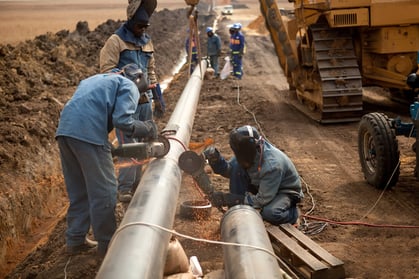
Along with advances in technology and development has come an increase in situations where workers are exposed to electrical hazards—some of which you wouldn’t even think of and are often overlooked. In order to protect your people, you need to know what the hazards are and what kind of protective equipment you need to provide for them.
Fire-resistant (FR) clothing refers to many different types of clothes including pants, overalls, vests, lab coats, rain wear, high-visibility, jackets, welding wear, hoods, masks and balaclavas.
Let’s be clear here: fire-resistant does not mean fire proof! Fire-resistant simply refers to the garment’s ability to self-extinguish. Not sure if your facility needs a fire-resistant clothing system? Let’s break it down:
1) Is there a possibility of an explosion?
Once an assessment is performed to determine if there is a risk of explosion, it’s time to decide what type of explosion risk is possible and what kind of protective clothing is necessary. Two of the most common types of hazards that require FR protective clothing are arc flash and flash fire. For these, two national consensus standards apply in choosing protective garments.
- Arc flash is common when working around electricity, for instance, working with electrical panels or in industrial settings. An arc flash is when an electric current leaves its path and travels through the air from one conductor to another, causing an explosion. This can happen due to dust, corrosion, accidental crossing of wires, condensation, faulty installation, or any number of things. The NFPA70E standard covers certain aspects of electrical safety and recommended FR clothing.
- Flash fire is a sudden and intense fire that is caused when a mixture of air and a flammable substance combine to ignite. Flash fires have extremely high heat, a short duration and a rapidly moving flame. These are often cataclysmic, causing extreme damage, injury and potential loss of life. The NFPA2112 standard specifies the minimum requirements of design, certification, testing and performance of flame resistant fabrics used for garments in those areas that are at risk of flash fires.
Not sure what radiant heat is? Imagine you are sitting at a campfire, you are pretty comfortable, then you touch your jeans and suddenly you feel like you are on fire. Radiation is the transfer of heat energy through space and it enters clothing, so choosing the right garment is very important. Common settings that may have a radiant heat risk include casting facilities, oil and gas well operations and steel foundries.
3) Will the worker be near liquid or chemicals?
When there is a danger of flash fires or burns from accidental release of liquid chemicals, OSHA requires the use of fire resistant clothing to protect against flashfires. Arc/ FR rated rainwear is also available for wet applications to keep workers dry and simultaneously protect against fire and arc flash.
4) Will the worker be near particulates?
Combustible dust is a concentration of airborne particles in a closed area that can be ignited by spark or static electricity. Particulates like dust or asbestos can be highly combustible and it is hugely important for workers to wear properly rated clothing as both a barrier and protection against injury, burn or death.
- FR Cotton Coveralls: 100% cotton with a protective stand-up collar, an action back for mobility, and separate arm cuffs with 2-position snap closures and multiple pockets. Meets NFPA 2112 and NFPA 70E and is rated CAT2.
- Flame-Resistant Clothing: Great for warm weather or indoor use, these garments can last for up to 50 washes; have anti-flash steel snap fasteners, bar-tacked stress points and are 5 thread safety stitched.
- Pyrolon® XT Coveralls: These flame retardant coveralls feature zipper closure and a set-in sleeve design that meets ANSI/ISEA 101-1996. Workers can move without worrying about rip-outs.
Important things to consider when choosing fire-resistant PPE:
- Wear life
- Durability
- Comfort
- Lab Testing
- Wear trials
- ATPV rating
- Labeling
- Ability to exceed minimum requirements
It is important to comply with safety standards, just know that this isn’t always enough protection for your workers. Understanding the hazards involved in the job and what precautions are necessary is the only way to ensure the highest level of protection for them. It is crucial to have a fire-resistant personal protection system in place, in which all employees understand the risks certain hazards present and what they need to do to avoid serious injury or death.
“Safety: It’s Your Life, It’s Our Business.”








